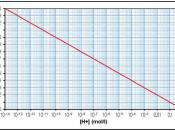Aim: Investigate the movement of osmosis through a selectively permeable membrane, in this case potato.
Introduction: Osmosis is the movement of water through a semi permeable membrane, separating solutions of different concentrations. The water passes from a region of high concentration to a region of low concentration, until the two concentrations are equal in concentrations of water.
Many cell membranes behave as semi permeable membranes, and osmosis is a vital mechanism in the transport of fluids in living organisms, for example, in the transport of water from the soil to the roots in plants.
If a cell is in contact with a solution of lower water concentration than its own contents, then water leaves the cell by osmosis, through the cell membrane. Water is lost first from the cytoplasm, then the vacuole through the tonoplast. The living contents of the cell contracts and eventually pulls away from the cell wall and shrinks, this is known as Plasmolysis.
If you put a plant cell in water, water enters by Osmosis, then swells up. However, the cell will not burst. This is due to the fact that the cell walls are made from cellulose, which is extremely strong. Eventually, the cell stops swelling, and when this point is reached, we say the cell is turgid. This is important, because it makes plant stems strong and upright.
Osmosis diagram:
Key:
Semi permeable membrane
Solvent molecule
Water molecule
Preliminary Work: In a sense, preliminary work is as important as the actual experiment. It allows you to make hypotheses before performing actual tests.
For my preliminary work, I used 33mm of potato. It was easy to cut 33mm and get it to weigh around 1g. To begin, we used 15mls of Glucose solution- this was the amount needed to cover one piece of...


